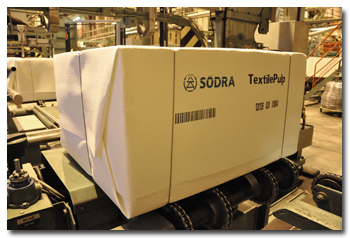ROSEVILLE, Minn.— February 2, 2012 — The Industrial Fabrics Association International (IFAI)
announced today that its Geosynthetics 2013 conference and trade show will co-locate April 1-4,
2013 at the Long Beach Convention Center, Long Beach, CA, with the Southwest Geotechnical Engineers
Conference (SWGEC), and the Geosynthetics Institute’s GRI-25 Conference.
According to conference chair Sam Allen, Vice President/Division Manager of TRI
Environmental, “This industry event is unique in its ability to gather the manufacturing,
engineering, installation and academic communities for in-depth technical discussion, professional
advancement and maximum business growth. These key opportunities increase exponentially with direct
involvement and contribution. An excellent investment and return is realized.”
The Geosynthetics 2013 conference theme is Geosynthetics for Water Energy Challenges, and
attendees will see a large array of all the major new developments in geosynthetics engineering and
technologies. The conference spans four days of technical programming, including short courses,
panel discussions and papers, plenary lectures and receptions. Professor Bob Holtz, Ph.D, P.E.,
University of Washington praises the value of IFAI’s Geosynthetics trade event: “With one
exception, I’ve attended every biennial Geosynthetics conference since 1987, and each one of them
was technically excellent and professionally rewarding. I always learned something new and exciting
from the technical sessions, short courses, exhibition, and special events.”
Geosynthetics 2013 is organized by IFAI, which is celebrating its 100-year anniversary in
2012. IFAI’s support of the industrial fabrics industry includes numerous contributions
specifically to the world of geosynthetic materials. IFAI has been a linchpin organization in this
regard, supporting and growing the geosynthetics industry.
- As a not-for-profit organization, IFAI has invested millions of dollars back to the
industry though its conferences, publications and programs.
- Organizing successful geosynthetics industry events since 1982, IFAI conferences have provided
networking opportunities and exposure to the industry for engineers, specifiers, contractors,
government agencies and academics.
- At the request of a fledgling industry more than four decades ago, IFAI started a geosynthetic
division to help build the industry and provide a forum for the development of specification
and standardization.
- IFAI’s geosynthetic division (now GMA, Geosynthetic Materials Association) has put a total
of more than $4 million into programs for the industry, including the development of
education, specifications and standardization, and government relations.
- IFAI’s publications arm has published geosynthetics journals and nearly three decades of the
industry-leading magazine,
Geosynthetics magazine (formerly GFR), totaling almost 200 issues.
- IFAI has worked collegially and professionally with other geosynthetic organizations including
IGS (International Geosynthetics Society), NAGS (North American Geosynthetics Society), and
GSI (the Geosynthetic Institute).
-
An esteemed advisory conference committee has been established and includes:
- Sam Allen, Vice President/Division Manager, TRI Environmental, Co-chair
- Prof. Robert Holtz, University of Washington, Co-chair
- L. David Suits, NAGS Executive Director, Education Chair
- Stan Boyle, PhD, PE, Vice President, Shannon Wilson, Technical Paper Co-chair
- Shobha Bhatia, PhD., Syracuse University, Technical Paper Co-chair
- Mark DeSalvatore, Geotechnical Services, California DOT, Member at Large
- Andrew Aho, GMA Managing Director, IFAI
- Ron Bygness, Editor,
Geosynthetics magazine
- Barbara Connett, Technical Program Manager, IFAI
- Deb Stender, Event Director/Secretary General, IFAI
Exhibiting and sponsorship opportunities are available to companies that market geotechnical
products and services. More information can be found on the event website or by contacting
Elizabeth Welsh at eawelsh@ifai.com.
Geosynthetics 2013 is supported by the North American Geosynthetics Society (NAGS); the
Geosynthetics Institute (GSI) and Geosynthetic Materials Association (GMA); under the auspices
of the International Geosynthetics Society (IGS); and is organized by the Industrial Fabrics
Association International (IFAI).
Online registration will be available soon at event websites for Geosynthetics 2013, GRI-25
and SWGEC. For more information visit www.geosynthetics2013.com.
Proposal information is available on the event website and submissions are being accepted
online at www.geosynthetics2013.com/Topic_Proposal_Submission.cfm through Feb. 8, 2012. Abstract
submissions begin Feb. 15. Questions? Contact Barbara Connett, Technical Program Manager, at
bjconnett@ifai.com.
Posted On February 6, 2012
Source: IFAI





